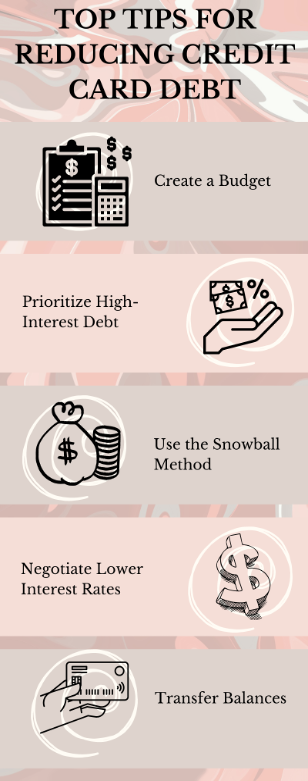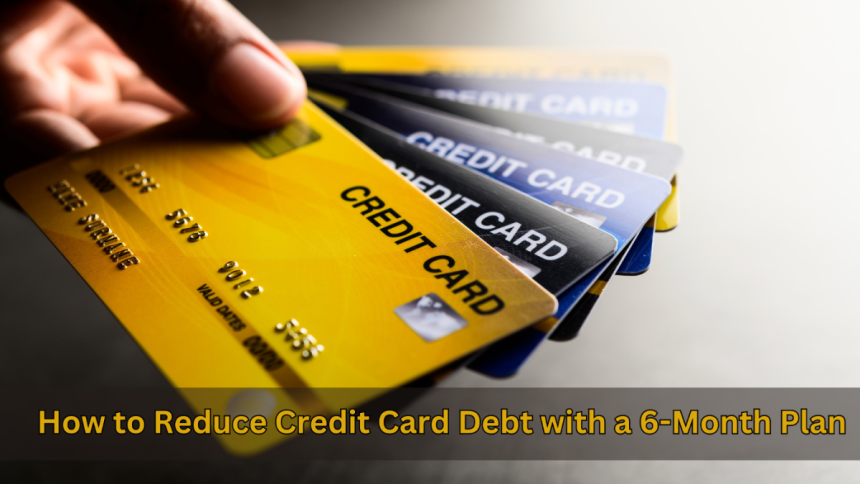Are you feeling overwhelmed by credit card debt? You’re not alone. Millions of Americans face this financial challenge, but don’t worry—there is good news. Using a strategic approach, you are going to be very surprised at how much progress you can make toward reducing your debt in only six months. This blog post will walk you through a step-by-step plan for dealing with credit card debt head-on.
We will walk through some essential methods of reducing your debt, discuss why you have to increase your monthly payments, and finally, talk about post-debt strategies to keep you financially healthy. By the end of this six-month plan, you will have learned the art of managing your finances and ways toward financial freedom.
How to Settle Credit Card Debt?
First, take a look at your financial situation: total debt against your income and expenses. First, determine how much you can afford to pay. Next, you would call up your credit card issuer and explain to them your financial hardship.
After that is where the agreement is decided; just make sure that you have it written, specifying the amount of the settlement and when it needs to be paid. After making the agreed settlement amount, ensure that your credit report now reads “settled” or “paid” on that debt.
In most instances, settlement of debt becomes a reduction of financial burden for you and a way before a likely legal action by the credit grantor. However, remember that this could be affecting your credit score; therefore, it would be a good idea to get help from a financial advisor.
Prioritize Debt Repayment Strategies
Debt Avalanche Method
Choosing the right repayment strategy is crucial to your debt-reduction journey. Two widely recognized methods are the Debt Avalanche and the Debt Snowball. The Debt Avalanche method prioritizes paying off credit cards with the highest interest rates first, effectively reducing the total interest you’ll pay over time and potentially shortening your repayment period by up to 15%.
This method is ideal for those focused on long-term savings and can be particularly effective if you’re trying to avoid a credit card debt lawsuit, as it helps you tackle high-interest debts more quickly.
Debt Snowball Method
The Debt Snowball works on the card with the smallest balance first. This gives a person some quick wins, which may help in building up some steam to do more. You will help yourself pay off your debts 15 percent faster than if you make equal payments across all your debts.
This is going to turn out very well for those who need early wins to help keep them motivated. After all, do what’s best for your situation and personal style, it’s the consistency that is going to get you out of debt.
Budget Restructuring
The best way forward is to adjust your expenditures against projected income to be able to save some money to pay off credit card debts with immediate effect. A simple budget review will suffice whereby you simply think about where money comes from and where it goes in relation to what goes out.
If you are concerned about being sued for credit card debt, it will then be time to hasten working on this problem. ProA properok into the budget with required adjustments such that funds can be allocated toward the debt in order not to invite the action.
Cut back on eateries, novelty subscriptions, luxury items, and all other non-essential purchases to reduce debt. Every dollar saved from discretionary expenditure is like another dollar to be put toward your process for debt reduction.
Implement a Debt Consolidation Strategy
After restructuring your budget, consolidating your debts can further streamline your repayment process and potentially save you money on interest.
Balance Transfer
One sure way of getting out is through a credit card balance transfer, which very often carries a 0% APR introductory offer. In this way, you can save hundreds in interest by turning multiple debts into one simple payment.
Be aware, however, of the transfer fees, usually 3% to 5% of the amount transferred, and note that a good credit score is usually required to qualify.
Debt Consolidation Loan
The alternative is a consolidation loan that will uncomplicate the nature of your payments and reduce all the interest costs. You will make the process of repayment a lot more manageable and cost-effective by rolling over various debts into one loan.
Over time, a debt consolidation loan will help you make regular, timely payments, which build a better credit score. It avails you with the opportunity to streamline your finances by reducing due date juggling and its related stresses. However, ensure with much importance that the new loan is upon better terms than your existing debts.
Monitor and Adjust the Plan
If you find yourself facing a credit card lawsuit, you might wonder, Do I need a lawyer for credit card lawsuits? Consulting a lawyer is highly advisable in such situations. A legal professional can offer expert guidance, help you understand your rights, and work on negotiating a favorable outcome.
Regularly Review and Adjust Your Debt Reduction Strategy
Reduce debt—monitoring consistently and revising as necessary. One of the things you can do is to take a monthly step back and review your progress to be sure you are on course. First, take a look at the big picture of your overall debt-reduction accomplishments. That lets you see how far you’ve reached.
Practical Tips to Avoid Accumulating More Debt
Lessen the temptation of overspending by using cash or debit cards for purchases, storing your credit cards at home in a secure location—preferably in the freezer—and removing saved card information from online sites. Over time, review your strategy to maintain your course.
Post-Debt Strategies
As you near the end of your 6-month debt reduction plan, much of your focus needs to be on strategies that will keep you from going back into debt when your life is hit with those curve balls. Having an emergency or rainy-day fund bulwarks against further debt when unexpected expenses pop up.
Also, rebuild your credit score if it went through a battering during the debt repayment process. Now, use credit cards wisely by charging small amounts that you have budgeted for and then pay the entire bill when it arrives. Never allow your credit utilization to creep above 30% of available credit for a strong score.
Remember that the practices you learned and cultivated during this process can become a possible foundation for long-term financial success. The continuation of those practices will be building into solid, sustainable new financial health.

FAQs
What are 4 ways to pay off credit card debt fast?
- Debt Avalanche Method: The debt avalanche strategy involves focusing on those debts first that have the highest interest rates to minimize total interest paid.
- Debt Snowball Method: Pay off the small balances first to get quick wins and a sense of accomplishment.
- Roll Over to Consolidate Debt: Combine this with a personal loan or a balance transfer card at a lower interest rate.
- Increase Payments: Take any extra money you may have, such as bonuses or tax refunds, and apply them to your debt to pay it off faster.
What happens after 6 months of not paying credit cards?
In six months of nonpayment, your credit card account may be charged off, which will greatly impact your credit score. The amount you owe can be sold by the creditor to a collection agency, in which case you may be taken to court. Also, with the accumulation of interest and fees, the total amount that is to be paid at the end will be more.
How do I get rid of 30k in credit card debt?
Consolidate to a low-interest personal loan or Balance Transfer. After that, attack with a Debt Avalanche by cutting out unnecessary expenses and growing your income to throw more money at the problem.
Conclusion
This is an ambitious plan for reducing credit card debt in the span of 6 months. With strategies for repayment prioritization, budget restructuring, debt consolidation, increased payments, and vigilance, you can make a strong start toward financial freedom. Once the debts are paid off, remember, the battle doesn’t end; continue using those basics of financial tenets throughout for long-lasting stability.
Lynn Martelli is an editor at Readability. She received her MFA in Creative Writing from Antioch University and has worked as an editor for over 10 years. Lynn has edited a wide variety of books, including fiction, non-fiction, memoirs, and more. In her free time, Lynn enjoys reading, writing, and spending time with her family and friends.















